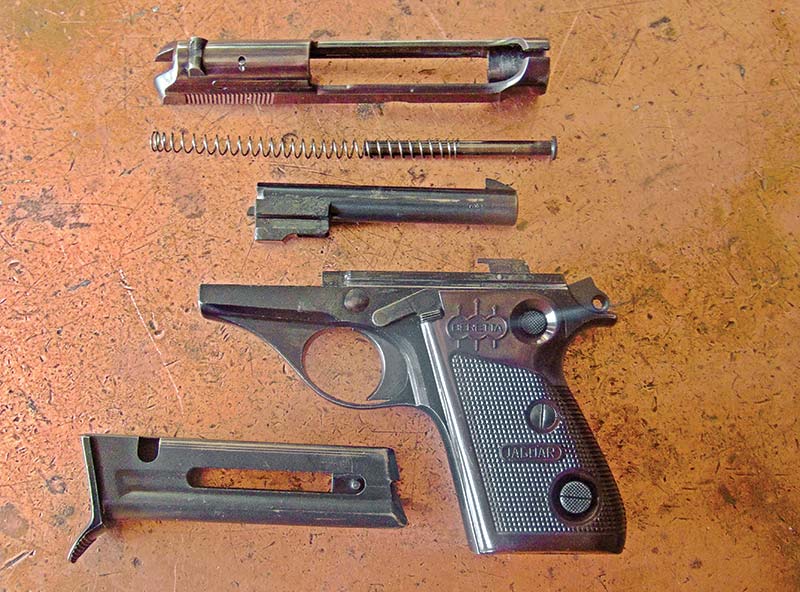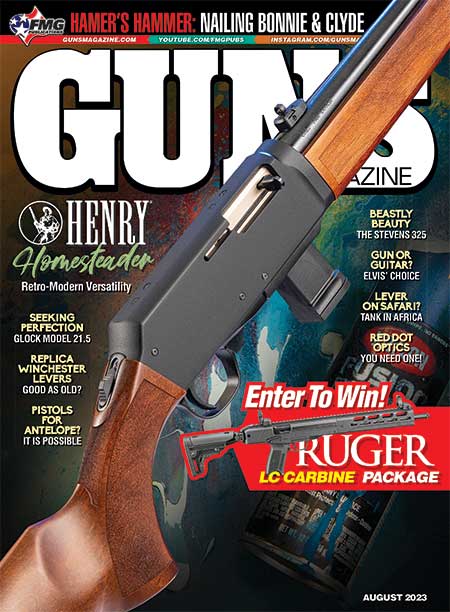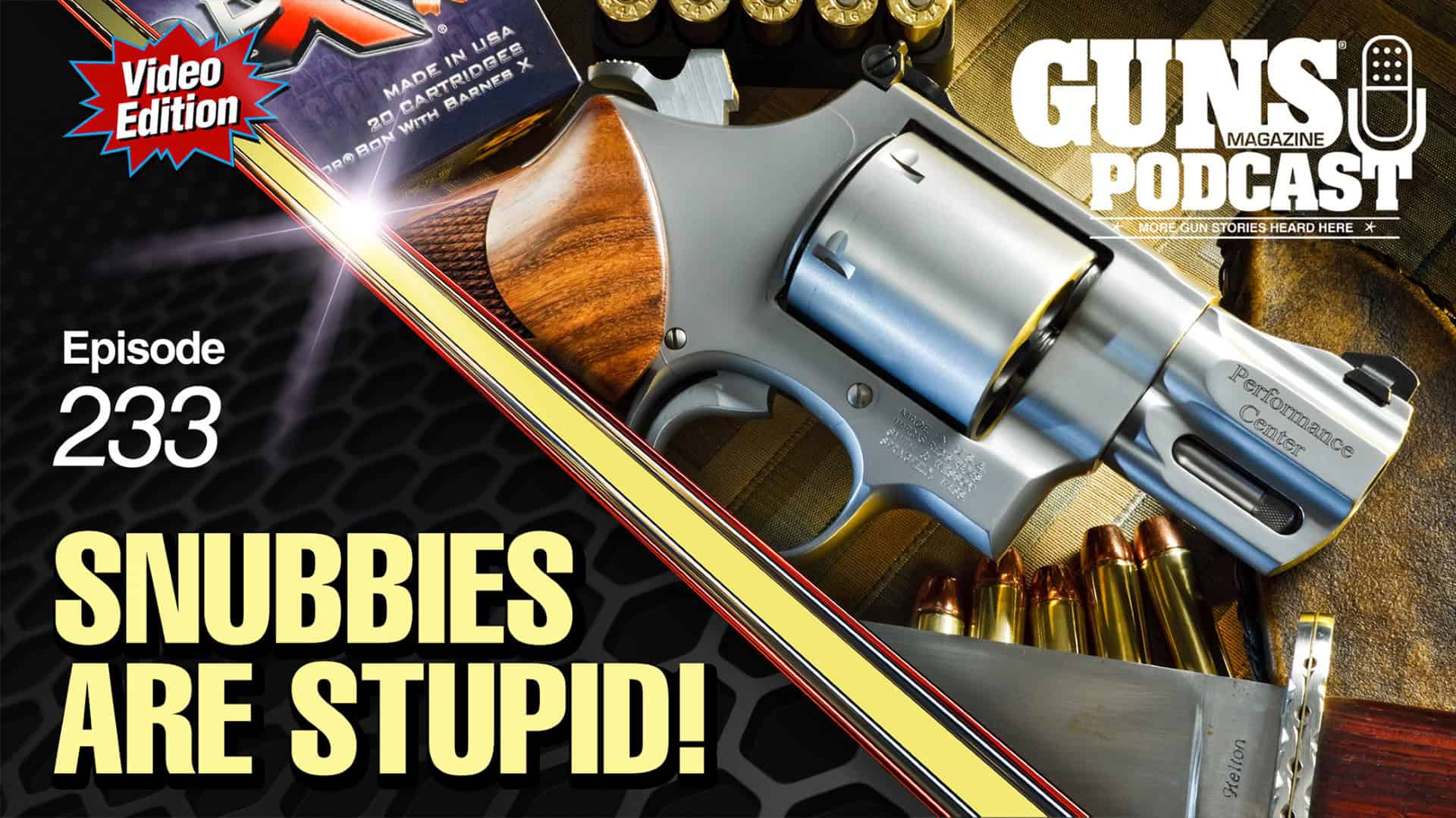Beretta Model 71 Jaguar
Covert Classic To Prized Plinker
Carryable Cat
But as far as I’m concerned, the coolest Beretta was the Model 71 Jaguar. I’ve been using various Beretta shotguns — autos and O/U — for years, but I’d never been particularly enamored of the company’s pistols except for the Model 1934 .380 Italian service sidearm, or at least until I had a chance to shoot the M71 Jaguar. It’s practically identical to the Model 70 except it featured an aluminum alloy frame and was available in .22 Long Rifle only (the M70 could also be had in .32 ACP or .380).
Basically, it’s a single-action with an 8-round magazine, a 3.5″ barrel, an external “mini-Commander”-style hammer and an aluminum alloy frame contributing mightily to the gun’s 17 oz. weight. This, combined with its OAL of 6.5″, may have been a factor in the adoption of the suppressed M71 by Israeli counter-terror personnel, in response to the massacre at the 1972 Munich Olympics.
Produced from 1962 to 1971, the M71 Jaguar, as well as the .22 LR M70, was also employed by an Israeli air marshal and performed spectacularly in a hostage rescue operation aboard a hijacked jetliner.
Predator To Plinker
Although the M71 once served as a discreet tool for eliminating threats, it was pretty much perfect in the less grim recreational role as a trail gun.
Basically, it’s a handy plinker/small game-getter along the lines of similarly discontinued .22 classics of its era such as the Browning Nomad, Hi Standard DuraMatic or Colt Huntsman. All share a similar price range, weight and overall length.
The M71 Jaguar provides reliability and accuracy in a lightweight platform and — even without the benefit of a suppressor — a relatively low noise signature.
Ergonomics are a major selling point for the pistol. The gun “feels” bigger than it looks. The plastic grips are comfortable and the magazine spur provides a “pinkie perch.” This plus the abbreviated beavertail ensure you don’t have to worry about continual grip-shifting while using the gun. The large button safety is positive, but its placement makes it less-than speedy to engage or disengage. Later models featured a 1911-style thumb safety.
The magazine release is a large serrated button set at the bottom rear of the left-hand grip panel. It’s quicker to operate than traditional European-style heel release and you’re not likely to inadvertently dump the mag by hitting it.
For a couple of years after the M71 Jaguar was discontinued, spare magazines were tough to come by. However, they’re now available through Arms Unlimited and Triple K. If you’re lucky enough to stumble on an M71 Jaguar, get a couple magazines. This slick little .22 is far too much fun to shoot to be relegated to paperweight status should the magazine supply dry up.
At The Range
One advantage of a 3.5″ barrel is that pretty much every .22 Long Rifle load stays well within subsonic limitations, which was undoubtedly a consideration when employing suppressed versions of the M71 Jaguar.
We chronographed a couple of loads we had on hand. Our average with Aguila 40-grain HV was 927 fps whereas the company’s standard velocity 40-grain Rifle Match averaged 811 fps. Seiller and Bellot 40-grain Club ammo averaged 902 fps.
Unable to resist the cat tie-in, we tried some elderly Winchester Wildcat 40-grain HV stuff that hit 920 fps. Finally, just for grins we clocked some 60-grain Aguila Sniper Subsonic which averaged 665 fps. From the little Jaguar, we could really notice the extra thump of those heavier bullets.
This M71 shot quite well for us at 25 yards off a sandbag rest. The fixed sights are rather small but good enough for our “unsuppressed” Jaguar, although getting a decent sight picture would be problematic with a can installed. The best 5-shot group with Aguila HV solids measured at just under 2″ with four shots in a 1″ cluster. The trigger was quite nice, breaking at just a hair under 4 lbs.
After we got done with chronographs at 10 feet and paper targets at 25 yards, we squandered a few boxes of bullets shooting at clay birds on a 50-yard berm. The results were gratifying. The short-barreled little .22 isn’t what you’d call your optimum rimfire plinker, but you can hit small stuff at the longer yardages once you get the drop doped out.
How about value? I’ve seen M71 Jaguars go for nearly $800 on up to $1,200 or so, which would be a pretty nice return (even taking inflation into account) on a gun costing just under $60 back in 1969.
If any vintage .22 pistol deserves the title of “sleeper,” this would, in my estimation, be it. Collecting out-of-print handguns for trade bait or as an investment is all well and good but I couldn’t imagine owning a Model 71 Jaguar and not shooting it.






